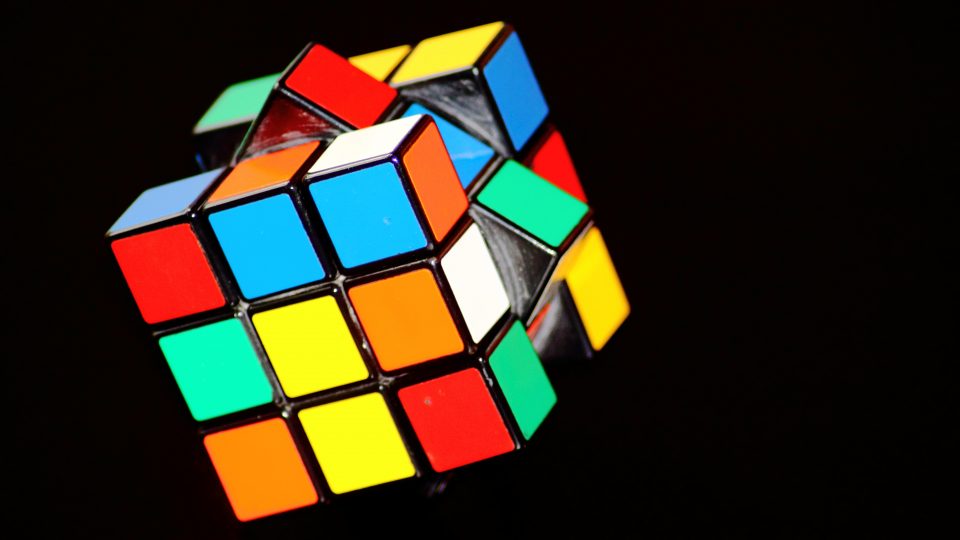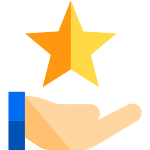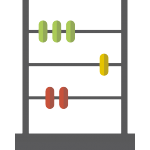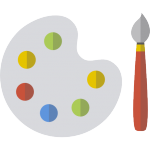Gamification is not new. In fact, the human behaviors that serve as the basis of gamification have been key to human survival and evolution.
Recently, much has been said about gamification and experts have emerged all around the globe. Gamification appears to be the solution to many problems: improving student performance, company productivity, engagement, cross-selling… so, we can’t help but wonder: what exactly is gamification and what is it for?
Good news: you have come to the right place to find out what this is all about.
What is NOT Gamification?
The boundaries between gamification and other teaching and learning strategies can be very fuzzy. Let us observe some of the cases:
Game Based Learning
 It is very importat to distinguish one from the other. That is key to making your gamification strategy work. Therefore, we bring you the main differences so you can start clean:
It is very importat to distinguish one from the other. That is key to making your gamification strategy work. Therefore, we bring you the main differences so you can start clean:
Game Based learning occurs through a reflection or approach given after or about a recreational activity that it’s rewarding by itself. This activity has all the characteristics of any game:
- Clearly defined rules and objectives within a single storyline and narrative.
- Clear start and finish (usually marked by the success of the winner and of the other players).
- The activity itself has a plot (including a climax) dictated by the game and players.
- It may contain several challenges, but all within the same purpose (like a movie).
If you would like to develop your own educational game, you can star at: Code.org
Opposite, gamification is:
- Defined rules and specific objectives that may or may not be obviously related.
- It doesn’t always have an explicit ending. Or it only finishes with the success of the student.
- Several gamification activities can have a unifying thread or plot or it can be used in a specific moment of the learning process among other strategies.
- Challenges can be independent and determined by a specific objective.
A reward system.
 This is one of the most common errors. We are very likely to think that gamification is a reward system or a very inviting way to stimulate healthy competition.
This is one of the most common errors. We are very likely to think that gamification is a reward system or a very inviting way to stimulate healthy competition.
Wait, let’s not be radical. By itself, a reward system is not gamification. But a reward system is part of a whole gamification strategy. Used alone is just another grade system (as in a school) or a salary bonus (as in an enterprise).
Something expensive.
Incorporating gamification to your program or course is not something expensive. You can create a strategy with the content and resources you’ve already made. It is a matter of creativity and a few adjustments. Just get inspired by the things you like most about games.
Next week we will tell you how.
Gamification is not gaming or playing
Gamification is about creating a complex strategy in order to encourage learning, retention and achieve other learning objectives.
Already clarified the difference, we can have a better understanding of what is it about. What are its components? and Why should we use them?
Components of a gamification strategy
Each one of the components of gamification may seem as a small strategy itself. Even though they are useful, the combination of several of those will definitely enhance learning and encourage your students.
Independent motivators or Structural gamification:
This is everything you may incorporate, regardless of the content. This can be defined just once by you or your institution and be used in many activities, courses or programs. A clear example is the animated Linkedin graphic which invites to fill your profile constantly. These are the most common elements:
 Points, rewards, badges or leaderboards: this activates competition mode (we all agree this is inherently human) therefore, the opportunity of achieving those stimulates constant and greater efforts. You would need to establish a reward, grading or badges system. Be sure to make it complex and take into account not only grades but effort, time spent and other inherent competencies or skills.
Points, rewards, badges or leaderboards: this activates competition mode (we all agree this is inherently human) therefore, the opportunity of achieving those stimulates constant and greater efforts. You would need to establish a reward, grading or badges system. Be sure to make it complex and take into account not only grades but effort, time spent and other inherent competencies or skills.
Clear objectives and progress: this allows the participant to know what should the accomplish and to self stablish some goals. If you need help doing this, we reccommend this post: How to define your course objectives
![]() Crear un avatar o colocar una foto de perfil: este motivador es de gran ayuda en procesos de capacitación empresariales o en grupos de estudio donde las personas se conocen. Les permite asumir roles o personalidades (en el caso de los avatars) o presumir de sus logros en las tablas de clasificación.
Crear un avatar o colocar una foto de perfil: este motivador es de gran ayuda en procesos de capacitación empresariales o en grupos de estudio donde las personas se conocen. Les permite asumir roles o personalidades (en el caso de los avatars) o presumir de sus logros en las tablas de clasificación.
Levels and difficulty: either letting your students to selecting the difficulty or letting them know in which level they are. Adding this information clarifies their advance and represent more attractive challenges.
Learning enhancers or Content gamification:
This is everything you should take into account when creating content. Therefore, you create content thinking about gamification. This does not mean that you can’t incorporate a little content gamification in your published course. You can add lessons, use chats or forums, incorporate case studies or improving your evaluations.
Simulation of real and relatable situations: 
When talking about learning, this works just as when you understand better an example than an abstract concept. Even more, when you appreciate something if you know its worth. As an instructor, you would have to postulate those cases that the participant is likely to face. Which resolution would occur due to the application of the concepts and skills being learned, also, this is a very effective evaluation method wich exposes the real potential of an employee or pupil. In this case, you could present them with a situation with one or few solutions, they should assess the situation and make a decision. It is of vital importance to give them proper feedback.
Interactivity:  Regardless you give them the illusion of choosing or they can really make desitions. Even if you ask them questions to be answered in other lessons or activities, any interaction is empowering. You can start by raising an issue for group discussion, letting then answer a poll or selecting which questions to answer in a quiz. Your goal is to make the learner feel ownership and management of their own learning path. That is making desitions and personalized learning.
Regardless you give them the illusion of choosing or they can really make desitions. Even if you ask them questions to be answered in other lessons or activities, any interaction is empowering. You can start by raising an issue for group discussion, letting then answer a poll or selecting which questions to answer in a quiz. Your goal is to make the learner feel ownership and management of their own learning path. That is making desitions and personalized learning.
Storytelling:  We have already agreed that this is not the main focus of gamification, storytelling is a great engaging strategy. The way to achieve it is with a consequent narrative, interesting and with a hint of mistery. You should include a few climax moments (like problems, step backs or crossroads). In that order, you can create a guideline o script for every video, presentation or challenge. Ask yourself if that information, as presented would be attractive to you. Appreciate it as ir you where a student.
We have already agreed that this is not the main focus of gamification, storytelling is a great engaging strategy. The way to achieve it is with a consequent narrative, interesting and with a hint of mistery. You should include a few climax moments (like problems, step backs or crossroads). In that order, you can create a guideline o script for every video, presentation or challenge. Ask yourself if that information, as presented would be attractive to you. Appreciate it as ir you where a student.
Learn how to create quality videos Teachlr en 5 tips for Creating your Online Course
Deadlines:  In most cases, asking students to complete tasks in a limited amount of time motivates the actual completion of the task and allows them to progress faster or at a more efficient pace along the course. This condition can be inherent of the learning management system or being established manually or by instructions from the teacher.
In most cases, asking students to complete tasks in a limited amount of time motivates the actual completion of the task and allows them to progress faster or at a more efficient pace along the course. This condition can be inherent of the learning management system or being established manually or by instructions from the teacher.
External content and social media:  To the extent your possibilities, what happens around or what is published in social media can be of advantage when used to relate contents with real life. This will make a more robust a real content and will give context to the knowledge. Using external content is excellent when creating simulations.
To the extent your possibilities, what happens around or what is published in social media can be of advantage when used to relate contents with real life. This will make a more robust a real content and will give context to the knowledge. Using external content is excellent when creating simulations.
Why gamification?
- Engaging and motivating students to complete tasks. (Learning becomes challenging and interactive)
Promoting development of skills and competencies. (Content+structural preferable)
Encouraging to finish the course on time. (Points for completing on time)
Progress reports and instant feedback of their own advancement. (Leaderboard and clear objectives)
Content retention. (Simulations, updated facts information, case studies, practical evaluation)
Interactivity and sense of empowerment. (Decision making, choosing levels, assume roles or personalities, creative solutions)
Rewards with exclusive access to special content, preparing for other courses you offer. (Ranking staff and achievements)
And especially because it’s much easier to implement than it seems!
Gamification isn’t new, it is based on the nature of human learning. Since the beginning of our species, challenges and threats have propelled us to learn. These are the basis of gamification, just to create an environment in wich realism and motivation are used to engage and empower a student.
To know more about this subject, please subscribe to our newsletter by clicking here.












Thanks for some other magnificent article. Where else may just anyone get that type of info in such
a perfect approach of writing? I have a presentation subsequent week, and
I am on the search for such information.
Great! Wish you luck. Hope you can subscribe and keep reading us.